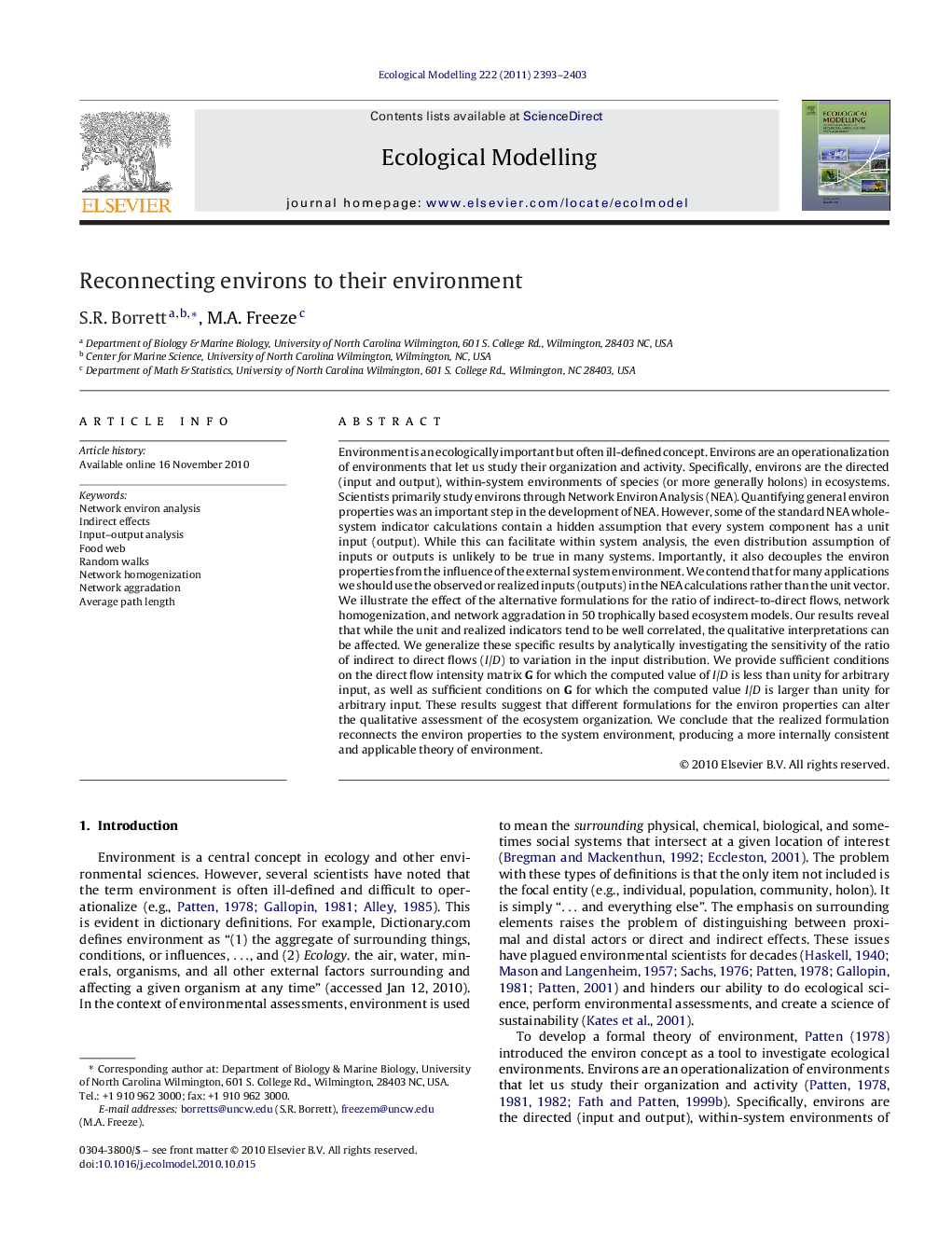| Article ID | Journal | Published Year | Pages | File Type |
|---|---|---|---|---|
| 4376880 | Ecological Modelling | 2011 | 11 Pages |
Environment is an ecologically important but often ill-defined concept. Environs are an operationalization of environments that let us study their organization and activity. Specifically, environs are the directed (input and output), within-system environments of species (or more generally holons) in ecosystems. Scientists primarily study environs through Network Environ Analysis (NEA). Quantifying general environ properties was an important step in the development of NEA. However, some of the standard NEA whole-system indicator calculations contain a hidden assumption that every system component has a unit input (output). While this can facilitate within system analysis, the even distribution assumption of inputs or outputs is unlikely to be true in many systems. Importantly, it also decouples the environ properties from the influence of the external system environment. We contend that for many applications we should use the observed or realized inputs (outputs) in the NEA calculations rather than the unit vector. We illustrate the effect of the alternative formulations for the ratio of indirect-to-direct flows, network homogenization, and network aggradation in 50 trophically based ecosystem models. Our results reveal that while the unit and realized indicators tend to be well correlated, the qualitative interpretations can be affected. We generalize these specific results by analytically investigating the sensitivity of the ratio of indirect to direct flows (I/D) to variation in the input distribution. We provide sufficient conditions on the direct flow intensity matrix G for which the computed value of I/D is less than unity for arbitrary input, as well as sufficient conditions on G for which the computed value I/D is larger than unity for arbitrary input. These results suggest that different formulations for the environ properties can alter the qualitative assessment of the ecosystem organization. We conclude that the realized formulation reconnects the environ properties to the system environment, producing a more internally consistent and applicable theory of environment.
